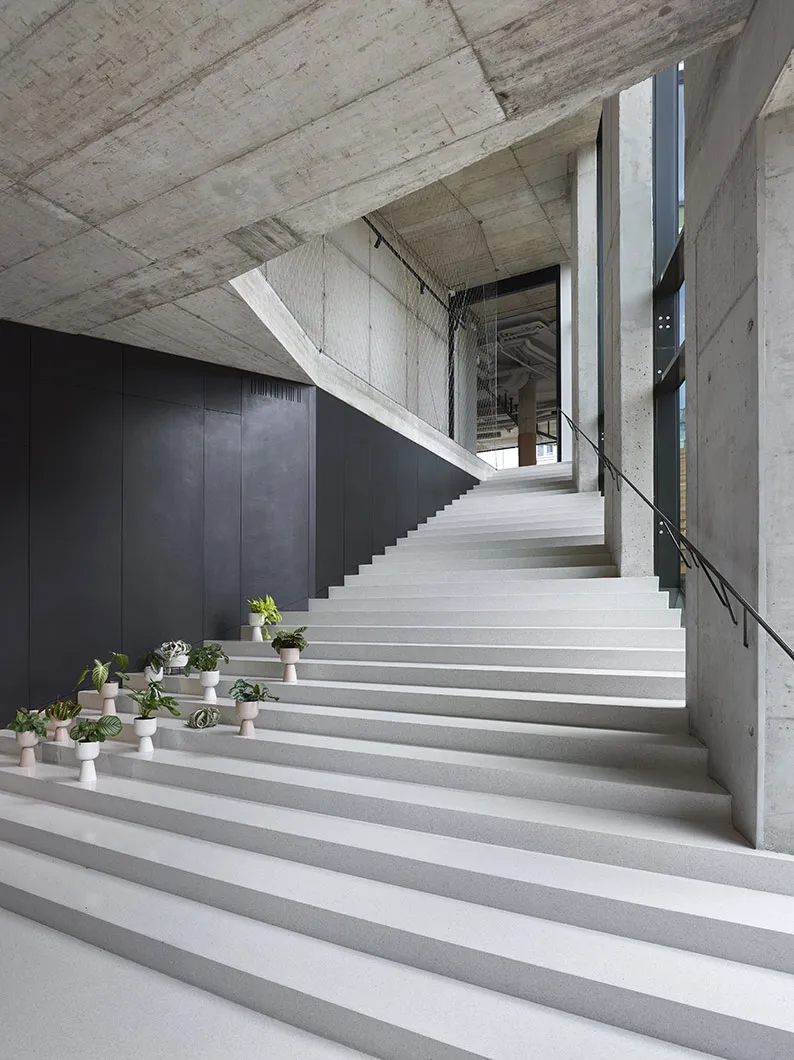In partnership with MiCodmc, a selection of establishments ripe for discovery during the 63rd edition of the Salone del Mobile.Milano, from 8th to 13th April
Design Port: the new point of reference for interior design in Prague

The iconic Holešovice building
An exhibition space that aims to become a meeting forum on interior design in an iconic building in Prague’s Holešovice district.
Design Port, more snappily known as DEPO, is neither a shop nor a showroom, but intended precisely to be a creative space and a source of inspiration for its multifaceted clientele: architects and designers, developers and investors, journalists and, especially, lovers of good interior design. The space opened in May 2021 but has already become an iconic city location and more besides. Located in Holešovice, one of Prague’s most dynamic districts, Design Port rises up in an area left abandoned for some time following the demolition of two buildings seriously damaged by the floods. Here, the Award-winning architect Stanislav Fiala has designed a corner building on the lot where two streets meet, instantly recognisable for the marked contrast between past and present, between concrete and vegetation and the long, irregularly shaped rust coloured vertical Corten strips. The building features plants of all kinds that soften the architectural rigour, further accentuated by the open supporting pillars that are metaphorically reminiscent of bedrock.

The top floor penthouse offers breathtaking views
The building consists of 3 underground floors earmarked for garages and 6 floors above ground, of which the top three are taken up by residential apartments, while Design Port occupies the first two. A spiral staircase connects the two floors of the exhibition space, while an imposing concrete stairway makes its way across the glass façade and out into the garden, extending the view and the use of the exhibition space outside. The interiors were conceived by the designer Ivanka Kowalski, accentuating the Brutalist look of the building, leaving the concrete walls and air conditioning ducts in full view to dialogue with the wood floors embellished with copper decorations, the container and hanging plants and, lastly, with the green façade.

Porro wardrobe unit system designed by Piero Lissoni, represented by Konsepti
As its name suggests, the Design Port is essentially a place of arrivals and departures, connections and intersections for contemporary local and international brands such as B&B Italia, Boffi, Cassina, De Castelli, DePadova, Flos, Knoll, Molteni&C/Dada, Moroso, Porro, Salvatori and Vitra.
Despite the public nature of the space, the atmosphere is one of intimacy and warmth. Like a real home. One is welcomed by comfy upholstereds (DePadova) and a giant island/kitchen (Patricia Urquiola for Boffi) that dominates the large space, while the bedroom is a homage to Slovak solid wood craftsmanship.
The showroom isn’t just an exhibition space, it is also a support point for young designers and a reference point for architects, aimed at becoming a forum for interior design.
Design Port is part of the Premium Design Group (PDG), set up in 2017, which owns the brands Konsepti (importers of high-end designer furniture into the Czech Republic since 1995), Javorina (a Slovak producer of solid wood furniture for over 70 years) and Royal Comfort (the official distributor of luxury American beds and premium mattresses. As well as producing premium equipment for residential, office and commercial spaces and providing exclusive services, the group is also very mindful of sustainable development and of the country’s history, craftsmanship and tradition.


 Stories
Stories
















